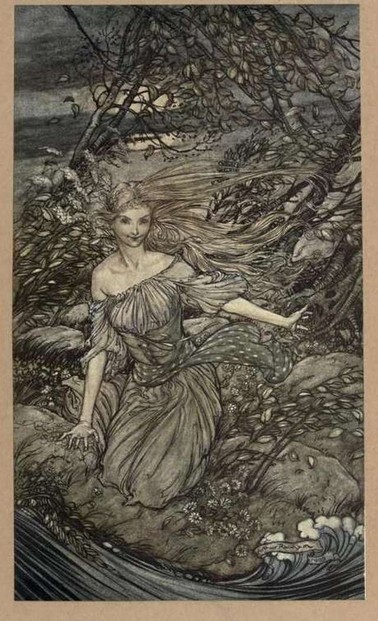Undine, a water spirit, who marries a knight to get a soul, just to be betrayed and became an Avenger, inspired hundreds of popular works since her story was published for the first time. She is a representative of a natural force, one of the first feminists and an ultimate femme fatale with significant red hair and many different superpowers.
George MacDonald, Hans Christian Andersen, Paul Gauguin, Antonin Dvorak, and other important artists found it irresistible and her spell is today stronger as ever. Shall we spend a few minutes to learn more about her? Who was Undine? Why is her story so special? What is a mythology behind her name? Here are ten mind-boggling facts about Undine!











 Vintage Postcard Artists with 10 Examples of Easter Cardson 02/21/2025
Vintage Postcard Artists with 10 Examples of Easter Cardson 02/21/2025
 Valentine's Symbolson 01/23/2025
Valentine's Symbolson 01/23/2025
 Thanksgiving Symbolson 11/12/2024
Thanksgiving Symbolson 11/12/2024
 Famous Witches in Literary Historyon 10/06/2024
Famous Witches in Literary Historyon 10/06/2024



Have you already read Undine?
Thank you!
The computer that I access when I am researching at the library can get sensitive -- for reasons unknown to me -- and impede my accessing information.
The cursor this time gave me Heinrich Vogeler for the Melusine image even as it hesitated over nothing else apart the very first, the book-cover image illustrated by Arthur Rackham: Je n'y entrave que dalle! ("I don't understand [anything] there but [a] flagstone" literally, "I don't get it at all" commonly.)
Gray in this case may suggest that there is no universal right or wrong like at black and white but the reality is somewehere between, among numerous shades of gray.
I think you are asking about the picture of Melusine by Heinrich Vogeler? The title should be seen by putting the cursor over the picture (without pressing).
Sorry, DerdriuMarriner, I do not have this info.
The fifth fact, The eternal and universal appeal of the theme, contains, in its first paragraph, a link to your hub Mythology Of Undine - A Mermaid Novella Or A Fairy Tale.
Arthur Rackham, as illustrator of the first in-text image, gives us Undine in her underwater home. That image has Undine in a gray environment. She perhaps is blue-garbed.
What might the symbolism of gray be?
The very last sentence advises us that "On the story level, we are witnessing the contrasts and fights between instincts and reason, working class and nobility, women and men, wilderness and civilization, paganism and Christianity."
Do those same contrasts and those same fights surface in The little mermaid?
The YouTube presentation, between facts 9 and 10, about Fouque and symbolism respectively, appears as Arthur Rackham artistry alone.
Who so astutely decided to make its YouTube frame a changing array of green and orange?
The in-text image between the first two facts, Paracelsus and Maybe the most popular book in the 19th century respectively, appears to fill building and land and tree, clothing and hair, sky and water with red.
The last paragraph to the fifth fact, The eternal and universal appeal of the theme, associates red with anger and extreme emotion or with evil.
Did Arthur Rackham have a known interpretation of Undine's actions and motives and thoughts?
Undine looks a bit lackadaisical and lethargic even as everything else looks churning, don't you think?
It's interesting that all the in-text images -- apart the two by Arthur Rackham -- have depictions of a white-clothed Undine.
Is it traditional to keep Undine in white, perhaps as an association with her sea-foam ambiances?
The ninth fact, that Even Fouque tweaked his own work, compares the Kuhleborn scene in the Hoffmann opera with its predecessor in the Fouque book.
Did that change result from Fouque reflecting upon verisimilitudinous plots or from opera-libretto guidelines?